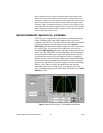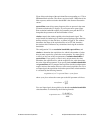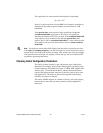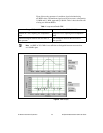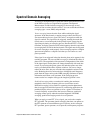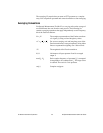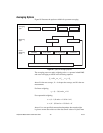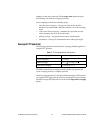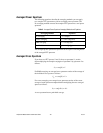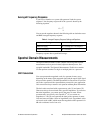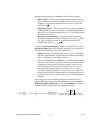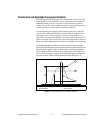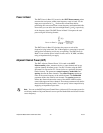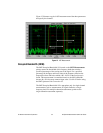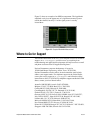
NI Spectral Measurements Toolkit User Guide 28 ni.com
Averaged Power Spectrum
The following equations describe the averaging methods you can apply
to a complex FFT spectrum to yield an averaged power spectrum. The
No averaging method converts the complex FFT spectrum to a real power
spectrum.
The averaged power spectrum is equivalent to the square of the magnitude
of the averaged FFT spectrum.
Averaged Cross Spectrum
If you have two FFT spectra, X and Y, the cross spectrum S
xy
results
from multiplying the complex conjugate of spectrum X by spectrum Y as
follows:
S
xy
= conj(X) × Y
For RMS averaging, an averaged cross spectrum consists of the average of
the individual cross spectra as follows:
S
xy
= < conj(X) × Y >
For vector averaging, an averaged cross spectrum consists of the vector
average of each spectrum computed before multiplying the two averaged
spectra as follows:
S
xy
= conj(<X>) × <Y>
A cross spectrum has no peak-hold average.
Table 3. Averaged Power Spectrum Averaging Methods and Equations
Averaging Method Equation
No averaging Y = X conj(X)
Vector averaging Y
k
= <X>
k
conj(<X>
k
)
RMS averaging Y
k
= <X conj(X)>
k
Peak-hold Y
k
= max(X
k
, Y
k-1
)
2



